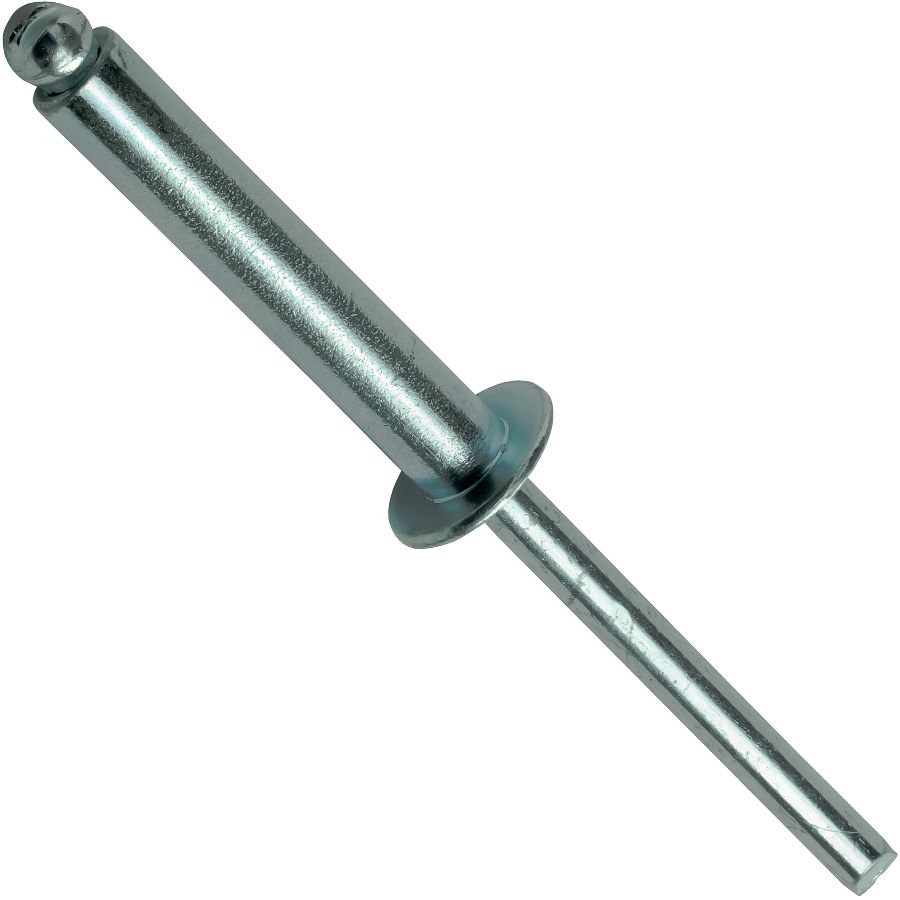
For example, the category of fasteners can include such items as:įor this article, we’ll focus on one small subsection of fasteners used in standing seam metal roof applications. “A hardware device that mechanically joins or affixes two or more objects together … fasteners are used to create non-permanent joints that is, joints that can be removed or dismantled without damaging the joining components.”īut the term “fastener” is broad and applies to products in many different industries. If you were to look up fastener in a dictionary, you’d get something along the lines of:
Metal rivet full#
However, in actuality, fasteners play a significant role in how a standing seam metal roof will perform, as fasteners are the main anchor points for the metal panels (and clips) to stay attached to the roof deck.īeyond carrying a full catalog of fasteners and other metal roofing accessories, Sheffield Metals also tests all of our engineered metal roofing systems with specific fasteners to ensure our customers are getting the best products available.

It seems like such a small piece of the puzzle, right?

If not, you may have to adjust the bend allowance if the sides aren't high enough, or W if the sides just don't fit.At first glance, you might not think much of a fastener used in a metal roof system. Now use the box brake to bend at the lines into a U-shape. Cut off the corners as before, and file the edges smooth. Dimple the rivet marks, and drill with a 3/32" bit. Use the template to mark rivet holes in each section along the long lines, so that the middle mark on the template is at the middle of each section. Make a paper template with three lines, each 1" away from each other. Run a line down each of the long edges, 1/4" away from the edge.
Metal rivet plus#
From one edge, mark off a line at H plus 1/32", then another line W" from that, and another line H plus 1/32" from that. So, use the shear to cut off another 4" length, and mark it as shown in the diagram. If it works for you, great, if not, you can cut another sheet and try again with a different allowance.

There are calculators on the web, but just use 1/32" for now, which worked for me. So what we need is a piece of metal that is 2 x H, plus W, plus 2 x bend allowance, whatever that is. The next diagram shows how a side would unfold, including its bend allowance. The bend allowance is the size of that messy bit in the middle which you need to know. The diagram shows what happens when you bend a piece of sheet metal. To do this, we need to take into account bend allowance. Now we need to figure out the measurement of the body that fits around the sides. The maximum measurement in the other direction is 3.073", or about 3 1/16", and so this is H for me. In the images, I have measured the width in two different locations, and the maximum is 3.141", which is nearest to 3 5/32", so this is what I'll use for W. Let's call this measurement H, also to the nearest 1/32". Do the same for the height of the side pieces, that is, across one tab. About the best we can do is measure this to the nearest 1/32".

It will, of course, end up being somewhat greater than 3". Measure both of the side pieces across two tabs, and take the maximum. Use calipers to measure first the width of the side. Because we haven't done anything very precisely, we need to measure the width of the sides in order to make the rest of the box's body.


 0 kommentar(er)
0 kommentar(er)
